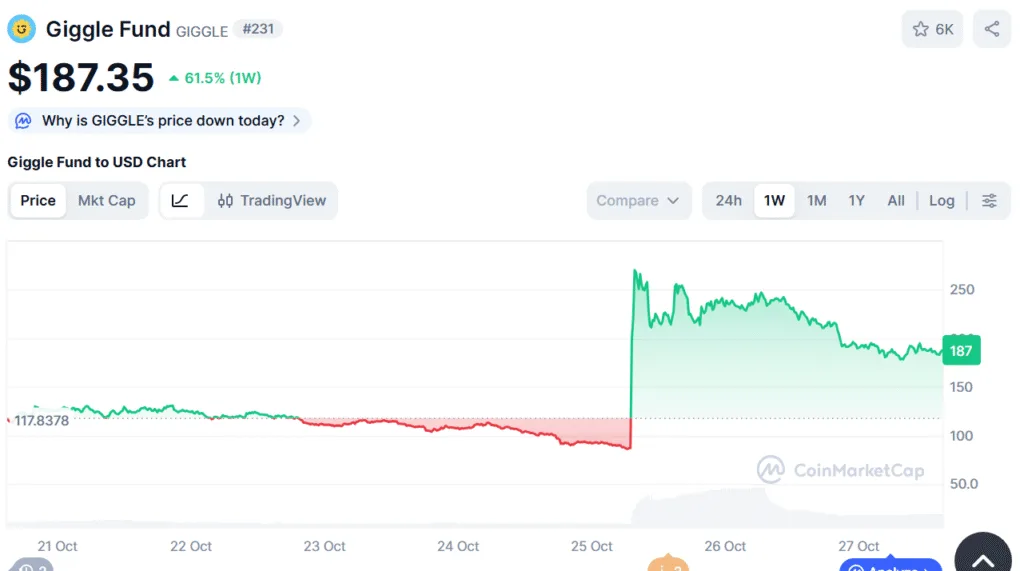- GIGGLE was listed on Binance spot trading on October 25, with pairs including GIGGLE/USDT and GIGGLE/USDC available to trade.
- GIGGLE positions itself as a charity-focused memecoin on BNB Chain, redirecting trading fees to the Giggle Academy education project.
- Binance’s integration with the x402 protocol and its wallet listing is amplifying interest in tokens like GIGGLE.
Binance officially announced the listing of GIGGLE, with trading opening for pairs such as GIGGLE/USDT, GIGGLE/USDC and GIGGLE/TRY starting October 25, 2025. Within hours the token surged nearly 217% jumping in barely 24 hours. The meme token hit highs of around $281 when it started trading at sub-$90 levels.

What Is GIGGLE? Is it more than just a memecoin?
Under the hood, GIGGLE describes itself as a memecoin with charitable credentials. It claims that the trading fees charged will feed the Giggle Academy, a nonprofit for education. So iy can have intrinsic value beyond being ‘just another memecoin’. But like all memecoins, analysts caution that the token remains highly speculative. Many have pointed out that it “lacks long-term fundamentals”
CZ, whales & x402: The ecosystem drivers
Much of the hype ties back to CZ’s broad support of BNB-chain meme coins and Binance’s heavy listing muscle. Whale data backs that up as on-chain data from Lookonchain shows that one wallet 0x279c spending over ~$1.2 million using USDT from their Binance wallet to snap up 4,794 GIGGLE. These tokens were purchased at ~$251 each soon after the listing. On-chain data shows that over 9,000 BNB, roughly $11 million, has already been donated to the foundation.
Newsletter
Get weekly updates on the newest crypto stories, case studies and tips right in your mailbox.
Interstingly, Binance has labeled GIGGLE with a “Seed Tag,” indicating it is under high volatility monitoring, despite having passed rigorous institutional-level vetting and being deemed safe for trading.
Increased infrastructure depth
In another related development within the Binance ecosystem, Binance recently rolled out what’s being described as a “new listing protocol” aimed at overseeing how projects get listed, how token flows are managed at launch, and how infrastructure partners feed into the process. For example, Binance has publicly listed the token of RedStone (RED) and has given RedStone prime exposure via its Launchpool and pre-market listing frameworks.
Binance has ties to the oracle and data-infrastructure world via RedStone, which is backed by Coinbase and is now integrated into or at least aligned with a number of key blockchain protocols. On a side note, Binance’s listing protocol is said to integrate with or tap into a payments or ecosystem protocol “x402” which is also backed by Coinbase.
With Coinbase, Binance, RedStone all playing parts in this listing and infrastructure game, the lines between exchanges, protocols, and data providers are getting blurrier. But the fact that Binance is layering in or highlighting oracle/data partnerships means that listings are more than just “token drops”. Binance wants to enter an ecosystem where data integrity and infrastructure matter.













